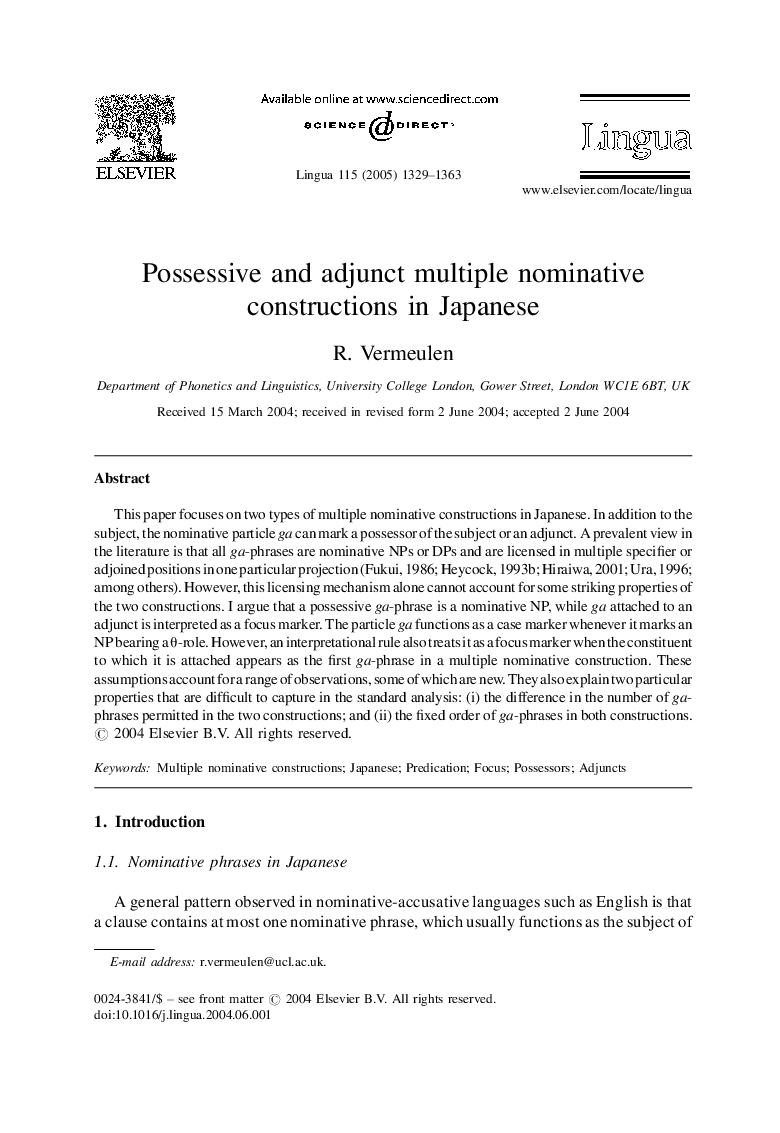| Article ID | Journal | Published Year | Pages | File Type |
|---|---|---|---|---|
| 10461154 | Lingua | 2005 | 35 Pages |
Abstract
This paper focuses on two types of multiple nominative constructions in Japanese. In addition to the subject, the nominative particle ga can mark a possessor of the subject or an adjunct. A prevalent view in the literature is that all ga-phrases are nominative NPs or DPs and are licensed in multiple specifier or adjoined positions in one particular projection (Fukui, 1986; Heycock, 1993b; Hiraiwa, 2001; Ura, 1996; among others). However, this licensing mechanism alone cannot account for some striking properties of the two constructions. I argue that a possessive ga-phrase is a nominative NP, while ga attached to an adjunct is interpreted as a focus marker. The particle ga functions as a case marker whenever it marks an NP bearing a θ-role. However, an interpretational rule also treats it as a focus marker when the constituent to which it is attached appears as the first ga-phrase in a multiple nominative construction. These assumptions account for a range of observations, some of which are new. They also explain two particular properties that are difficult to capture in the standard analysis: (i) the difference in the number of ga-phrases permitted in the two constructions; and (ii) the fixed order of ga-phrases in both constructions.
Keywords
Related Topics
Social Sciences and Humanities
Arts and Humanities
Language and Linguistics
Authors
R. Vermeulen,
